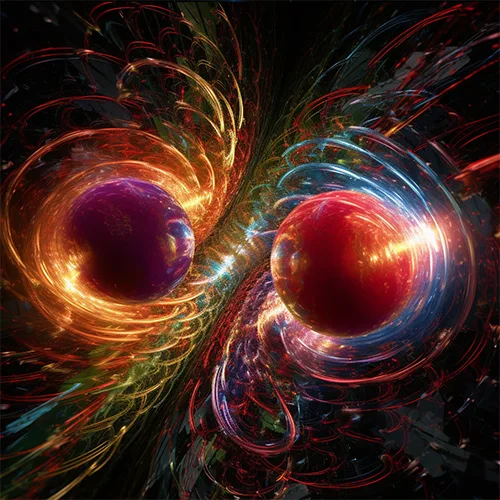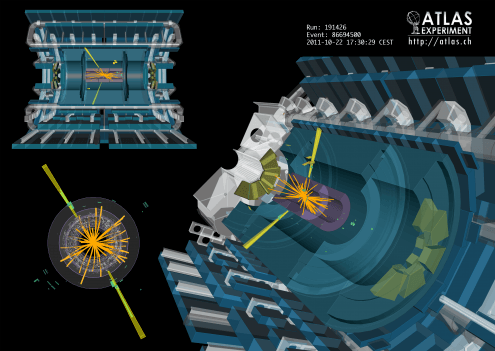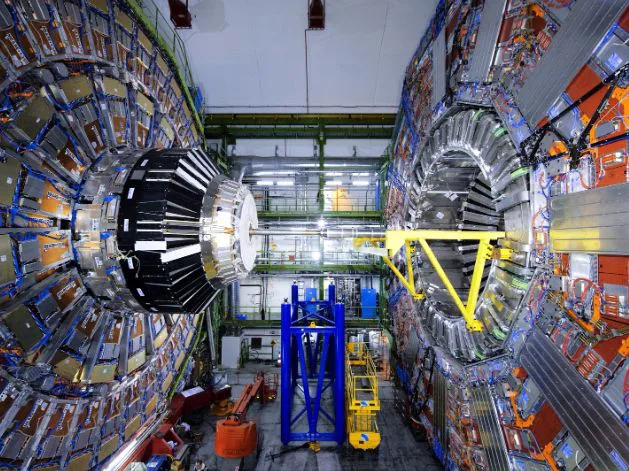
The world of quantum physics is filled with intricate interactions among elementary particles. Scientists are trying to find insights from these interactions. They call it the, elastic scattering.
During elastic scattering, the particles involved exchange energy and momentum but do not undergo any particle creation or annihilation processes. The scattered particles typically change their direction and momentum after the collision but retain their original identities and properties.
Recently, the ATLAS experiment conducted at the LHC accelerator delved into the fundamental properties of strong interactions between protons at astonishingly high energies.
In this experiment, scientists investigated how particles maintain their identities after colliding and scatter at various angles. By scrutinizing the scattering angles, researchers gained information about the spatial structure of the colliding particles and the nature of their interactions.
Exploring Elastic Scattering
When we see the physics of billiard ball collisions, we find momentum and energy are conserved, resulting in elastic interactions.
The scattering angle in such collisions depends on the centrality of the collision. It is often quantified by the impact parameter, that is, the distance between the centers of the balls in a plane perpendicular to their motion.
When the impact parameter is small, signifying a highly central collision, the scattering angles become large. Conversely, as the impact parameter increases, the scattering angle decreases.
When it comes to particle physics, elastic collisions occur when two particles collide. And in the process, conserve their identities while scattering at specific angles relative to their original motion.
By precisely measuring these scattering angles, scientists gain insights into the spatial structure of the colliding particles and the properties of their interactions.

The ATLAS Experiment at the LHC
Physicists from the Institute of Nuclear Physics Polish Academy of Sciences conducted a significant measurement. They studied elastic scattering in collisions between protons at the LHC accelerator. The collisions took place at a high energy of 13 TeV, which is a remarkable achievement.
Due to the minuscule scattering angles involved—less than a thousandth of a degree—this experiment demanded the use of a specialized measurement system.
The key element of this system was a set of detectors positioned over 200 meters from the collision point. These detectors could precisely measure scattered protons at distances as small as a few millimeters from the accelerator beam.
The team used a technique called “Roman pots”. This involved placing detectors inside the accelerator beam pipe to collect data. The detectors were able to get close to the beam during the experiment.
The Krakow group’s contribution to the trigger and data acquisition system was vital in recording the necessary data for the experiment.
The experimental setup included a special configuration of magnetic fields in the LHC accelerator beam. This configuration allowed for precise measurements.
Normally, beams are tightly focused to increase interactions, but this makes measuring elastic scattering difficult. However, the unique magnet setup minimized the beam’s angular divergence, enabling accurate measurements to be made reliably.
Insights from the Measurement
The measurement’s results revealed the distribution of the scattering angle, specifically a variable called “t” related to the angle squared.
By studying this distribution, researchers obtained valuable insights into the fundamental properties of strong interactions between protons at extremely high energies.
The extraction of this information depended on the quantum nature of elastic scattering, which goes beyond simple billiard ball collisions.
The measurement relied on the optical theorem, which relates elastic interactions to inelastic processes. In the collisions studied, inelastic processes were common due to the high energy of the protons.
Using the optical theorem, scientists calculated the total cross-section parameter solely based on measurements of elastic interactions.
In particle physics, the cross-section tells us how likely a certain reaction will occur. The total cross-section shows the chance of any proton-proton collision and relates to the proton’s size.
The ATLAS Collaboration made the most precise measurement of this parameter at 13 TeV energy. Accurate detector positions determined by the IFJ PAN group contributed to the high precision.
The result confirms a crucial property of strong interactions: the total cross-section increases as collision energy rises. This implies that the size of the proton expands with higher energy levels.
Knowing the total cross-section is important not only for studying strong interactions but also for other areas of particle physics. It plays a role in the search for new physics at the LHC, where strong interactions act as a background signal.

Takeaway
The remarkable measurements conducted by the ATLAS Collaboration shed light on our understanding of fundamental particle interactions.
The insights gained from elastic scattering not only deepen our comprehension of strong interactions but also have implications for various areas of particle physics, including the search for new physics at the LHC and cosmic ray research.
Cosmic ray research involves the use of detectors and observatories located on the Earth’s surface or deployed on satellites, high-altitude balloons, or deep underground. These instruments measure the properties, energies, and arrival directions of cosmic rays, allowing scientists to investigate their sources, energy spectra, composition, and behavior.
With detectors being prepared for even higher energy measurements and ongoing research into strong and electromagnetic interactions, the use of Roman pots continues to play a pivotal role in expanding our knowledge of the intricate world of particle physics.
Via: The Henryk Niewodniczanski Institute of Nuclear Physics Polish Academy of Sciences



